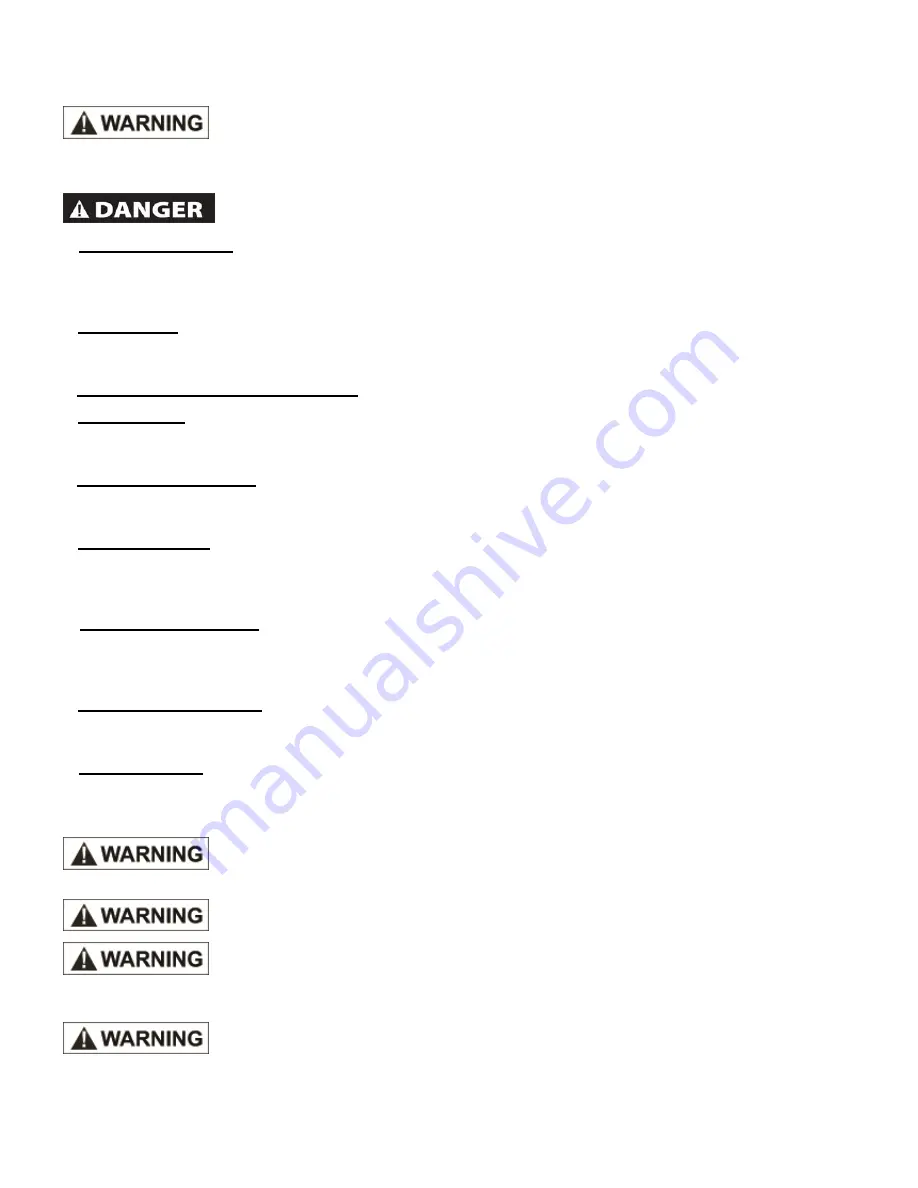
IMPORTANT SAFETY PRECAUTIONS
SAVE ALL INSTRUCTIONS
Improper operation or maintenance of this product could
result in serious injury and/or property damage. Read and understand all of the warnings and safety
instructions provided before using this equipment.
Do not use this compressor to supply breathing air.
■
Risk of Moving Parts
. If the air compressor is in operation, all guards and covers should be attached or installed
correctly. If any guard or cover has been damaged, do not operate the equipment until the proper personnel have
correctly repaired the equipment. The power cord should be free of any moving parts, twisting and/or crimping while in
use and while in storage.
■
Risk of Burns
. There are surfaces on your air compressor that while in operation and thereafter can cause serious
burns if touched. The equipment should be allowed time to cool before any maintenance is attempted. Items such
as the compressor pump and the outlet tube are normally hot during and after operation.
■
Always Wear Approved Eye protection.
■
Risk of Falling.
Operation of the air compressor should always be in a position that is stable. Never use the air
compressor on a rooftop or elevated position that could allow the unit to fall or be tipped over. Use additional air hose
for elevated jobs.
■
Risk from Flying Objects
. Always wear approved safety glasses with side shields when the air compressor is in use.
Turn off the air compressor and drain the air tank before performing any type of maintenance or disassembly of the
hoses or fittings. Never point any nozzle or sprayer toward any part of the body or at other people or animals.
■
Risk to Breathing.
Avoid using the air compressor in confined areas. Always have adequate space (30 cm) on all
sides of the air compressor. Also keep children, pets, and others out of the area of operation. This air compressor does
not provide breathable air for anyone or any auxiliary breathing device. Spraying material will always need to be in
another area away from the air compressor to not allow intake air to damage the air compressor filter.
■
Risk of Electrical Shock.
Never utilize the air compressor in the rain or wet conditions. Any electrical issues or
repairs should be performed by authorized personnel such as an electrician and should comply with all national and
local electrical codes. The air compressor should also have the proper three prong grounding plug, correct voltage, and
adequate fuse protection.
■
Risk of Explosion or Fire.
Never operate the compressor near combustible materials, gasoline or solvent vapors. If
spraying flammable materials, locate the air compressor at least 50m away from the spray area. Never operate the air
compressor indoors or in a confined area.
■
Risk of Bursting.
Always drain the air compressor tank daily or after each use. If the tank develops a leak, then
replace the air compressor. Never use the air compressor after a leak has been found or tried to make any
modifications to the tank. Never modify the air compressor's factory settings which control the tank pressure or any
other function.
Only persons well acquainted with these rules of safe operation should be allowed to use the
compressor.
Keep visitors away and never allow children in the work area.
CALIFORNIA PROPOSITION 65 This product or its power cord may contain chemicals,
including lead, known to the State of California to cause cancer and birth defects or other reproductive harm. Wash
hands after handling.
SOME DUST CREATED BY POWER SANDING, SAWING, GRINDING, DRILLING, AND
OTHER CONSTUCTION ACTIVITIES CONTAINS CHEMICALS KNOWN TO CAUSE CANCER, BIRTH DEFECTS OR
REPRODUCTIVE HARM.
2



































